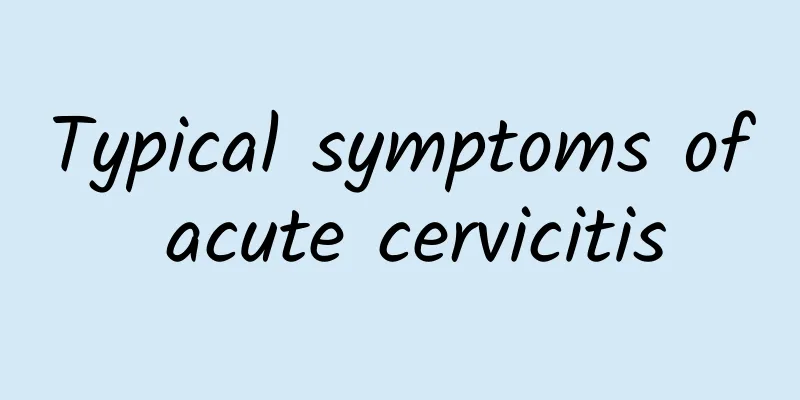Does interventional embolization for adenomyosis require urinary catheterization?

|
Interventional embolization for adenomyosis usually requires a urinary catheter to ensure normal bladder function during and in the early postoperative period and to reduce the impact of residual urine on the operation site. The urinary catheter is mainly for the smooth operation and patient safety and will be removed during the recovery period after surgery. 1. Why is a urinary catheter needed? Interventional embolization for adenomyosis is a minimally invasive procedure that mainly uses interventional technology to inject embolic materials into the uterine artery to block the blood supply to the lesion. Since the operation requires a long period of immobility, catheterization can avoid the trouble of a full bladder and reduce unnecessary movement during the operation. The injection of contrast agent during the operation may affect the need to urinate. The use of a catheter can help empty the urine in time and reduce bladder pressure. Not only that, patients may have difficulty getting out of bed or pain in the early postoperative period. A catheter can help solve urination problems and relieve discomfort. 2. What discomfort will catheterization cause? During the catheterization process, patients may feel slight discomfort, especially those who are undergoing catheterization for the first time. However, medical staff will use lubricants to reduce irritation and ensure gentle operation. After the operation, patients may feel a temporary foreign body sensation or slight burning sensation in the urethra, but it will generally be relieved quickly after removal. If severe pain, difficulty urinating, or symptoms of urinary tract infection such as frequent urination and painful urination occur during or after the catheterization process, you should be informed in time to take treatment measures. 3. How to care after intubation? Postoperative care is very important. Strictly follow the doctor's instructions to keep the catheter clean to prevent infection. Medical staff will regularly observe the color and volume of urine and replace the drainage bag in time. After the catheter is removed, pay attention to drinking more water and keep the daily urine volume above 1500-2000 ml, which helps flush the urinary tract and prevent infection. If you experience abnormal phenomena such as difficulty urinating or frequent urination after removal, you need to see a doctor for further examination. Adenomyosis interventional embolization is a relatively safe operation, but catheterization is an important part of it, the purpose is to ensure smooth operation and postoperative recovery, while reducing the occurrence of complications. After the operation, you need to follow the advice of the medical team and pay attention to body signals to help speed up your recovery. If you have any questions about the operation or postoperative care, you can communicate with the doctor in detail in advance to better reduce the psychological burden. |
<<: What are the common symptoms of uterine fibroids?
>>: Do cervical cysts and ovarian cysts need treatment?
Recommend
What medicine is used for cervical erosion? Use erosion suppositories
Cervical erosion is a disease that troubles many ...
What are the symptoms of cervicitis in women? What are the prevention methods for cervicitis in women?
Female cervicitis is divided into acute cerviciti...
Will vulvar leukoplakia affect life expectancy?
Will vulvar leukoplakia affect life expectancy? V...
What are the complications of ovarian cysts?
What are the complications of ovarian cysts? Comp...
New Taipei City: Clenbuterol found in Ruifang Haramachi Japanese hotpot
The controversy over the use of ractopamine in Am...
How should diabetics eat to lose weight? Experts teach you how to do this without hurting your body
A proper diet can not only achieve the goal of co...
What are the most common symptoms of cervical hypertrophy?
Cervical hypertrophy is the most common gynecolog...
What medicine should I take for constipation caused by uterine fibroid atrophy? How to solve constipation caused by uterine fibroid?
What medicine should I take for constipation caus...
What are the symptoms of uterine fibroids and what are the methods to suppress uterine fibroids?
Uterine fibroid inflammation Adhesion of fibroids...
Expert introduction: Comparison of symptoms before and after vulvar leukoplakia
Regarding the main symptoms of vulvar leukoplakia...
There are three main causes of ovarian cysts
Ovarian cyst is a common gynecological disease an...
What is the reason for irregular menstruation? I haven't had my period for a month and a half.
What is the reason for irregular menstruation? I ...
Collagen + Astaxanthin helps metabolism for beauty
For girls who are implementing a weight loss plan...
Can cervical erosion be used to detect pregnancy?
Checking for cervical erosion cannot detect pregn...
What complications and symptoms can cervicitis cause?
Cervicitis may cause complications such as pelvic...









